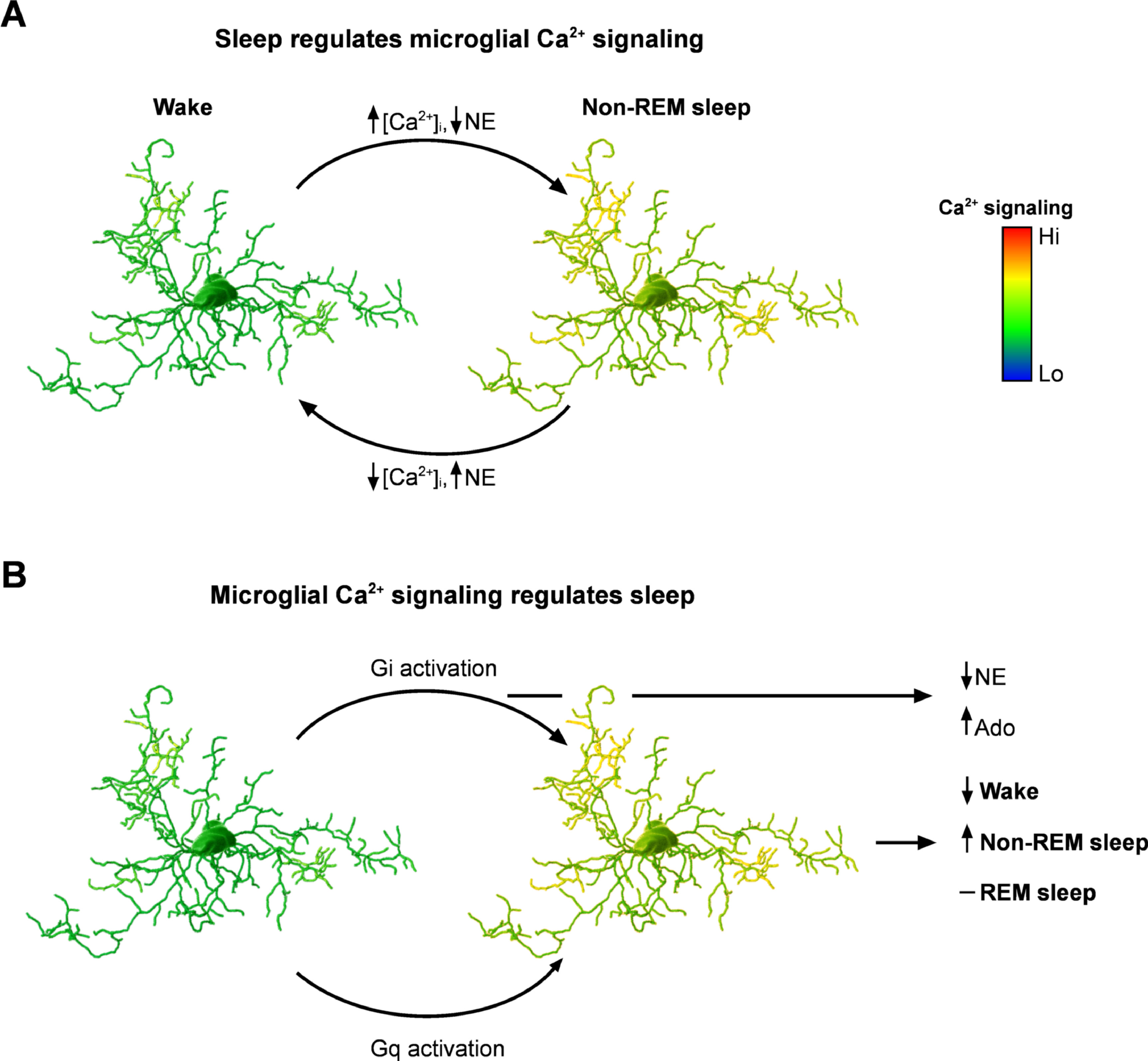Sleep, calcium and microglia – an (un)expected liaison
 Why evolution made sleep an almost ubiquitous property of animals remains an enigma; similarly, the mechanisms regulating the sleep-wake cycle, although being extensively studied over decades remain controversial. The central role of neuroglia in sleep was proposed by Santiago Ramón y Cajal in 1895. He postulated that fine processes of astrocytes can insert in-between synaptic contacts thus limiting information transfer and instigating sleep. The role of astrocytes in sleep regulation was further corroborated by observations that astrocyte-derived adenosine affects sleep homeostat, the astrocyte-controlled changes in interstitial ion concentration promote sleep, whereas norepinephrine acting primarily on astrocytes regulates arousal. A recent study by Yang Dan and his collaborators published in Nature Neuroscience extended the glia-sleep connection by showing the role of P2Y12 purinoceptors-induced microglial Ca2+ signalling for wake-to-sleep transitions.
Why evolution made sleep an almost ubiquitous property of animals remains an enigma; similarly, the mechanisms regulating the sleep-wake cycle, although being extensively studied over decades remain controversial. The central role of neuroglia in sleep was proposed by Santiago Ramón y Cajal in 1895. He postulated that fine processes of astrocytes can insert in-between synaptic contacts thus limiting information transfer and instigating sleep. The role of astrocytes in sleep regulation was further corroborated by observations that astrocyte-derived adenosine affects sleep homeostat, the astrocyte-controlled changes in interstitial ion concentration promote sleep, whereas norepinephrine acting primarily on astrocytes regulates arousal. A recent study by Yang Dan and his collaborators published in Nature Neuroscience extended the glia-sleep connection by showing the role of P2Y12 purinoceptors-induced microglial Ca2+ signalling for wake-to-sleep transitions.
The article is accessible on the following DOI: https://doi.org/10.1016/j.ceca.2024.102872
